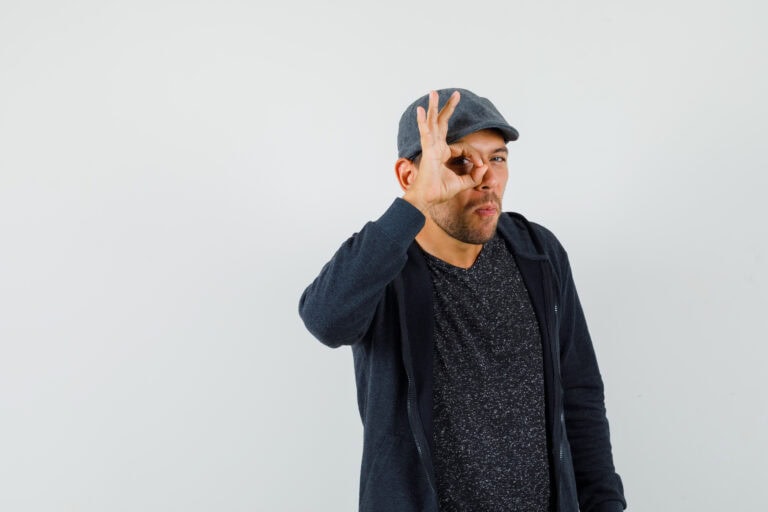Stress can creep up quietly, but the Holmes-Rahe Stress Scale helps make it visible by measuring how life events affect well-being. Major changes, even positive ones, add up and strain the body over time. Recognizing high scores promptly means taking action before exhaustion or illness sets in. Simple habits like deep breathing, setting boundaries, and talking through worries can ease the load. The next steps reveal how to turn awareness into lasting relief.
The Holmes-Rahe Stress Scale
While daily hassles could feel manageable, big life changes—even happy ones—can quietly pile up and strain the body. The Holmes-Rahe Stress Scale measures how these events affect health by assigning point values to 43 major life experiences, from marriage to job loss. High scores signal greater stress risks, with totals above 300 linked to potential illness.
Though widely used, the scale isn’t perfect—it simplifies stress’s complex role and relies on memory. Still, it helps identify who may need support. Stress from life shifts, good or bad, can build unnoticed until the body reacts. Recognizing this pattern lets people take steps promptly, turning awareness into action before strain takes a toll.
Small changes add up, just like the points on the scale.
Calculating Your Stress Score
How can you measure the weight of life’s changes on your health? The Holmes-Rahe Stress Scale, also called the Social Readjustment Rating Scale (SRRS), assigns point values to 43 stressful life events.
To calculate a stress score, individuals add up the points for major life events they’ve experienced in the past year, such as divorce (73 points) or job loss (47 points). Even positive changes, like marriage (50 points), contribute to the total. The higher the score, the greater the potential impact on well-being.
This simple tally helps quantify stress exposure, offering insight into health risks. Whereas not a diagnosis, the score serves as a starting point for recognizing whenever stress management might be needed. The process takes minutes but provides valuable self-awareness.
Interpreting Your Results
Comprehending your score on the Holmes-Rahe Inventory helps gauge your risk of stress-related health issues based on recent life events. Scores above 300 suggest high risk, while those between 150-300 indicate moderate risk, and lower scores reflect lower chances of problems.
Once you know your results, the next step is to evaluate stress management strategies tailored to your level of risk.
Understanding Your Score
The Holmes-Rahe Stress Inventory gives a clear image of how much stress someone has faced over the past year—and what it could signify for their health. The scale assigns a numerical rating to life stress based on recent readjustments, from major events like divorce to smaller challenges like holiday stress.
A score under 150 suggests lower risk, while 150-300 signals a 50% chance of health issues in two years. Scores above 300 indicate an 80% risk, requiring immediate attention. By quantifying stress, the inventory helps individuals recognize patterns and potential health impacts. Comprehending this rating allows people to see where they stand and whether lifestyle changes could reduce future risks.
Next Steps After Assessment
Once the Holmes-Rahe Inventory score has been calculated, the results can feel overwhelming—but comprehension of what comes subsequent makes all the difference. Low scores (below 150) on the Social Readjustment Rating Scale (SRRS) suggest manageable stress, while scores between 150-300 signal high risk.
Those exceeding 300 face an 80% chance of major health issues within two years due to chronic stress. Immediate steps include discussing scores with a healthcare provider to create a personalized plan. Regular re-evaluation helps track progress.
Prioritizing self-care, like exercise or mindfulness, can improve health impacts. Identifying stressors promptly allows for proactive changes, reducing long-term risks. Small, consistent adjustments—like better sleep or setting boundaries—can make a major difference. Support networks also play a key role in managing stress effectively.
Common Stress Triggers and Their Impact
- Death of a spouse (100 points): The highest stressor, often triggering grief and physical strain.
- Divorce (73 points): Disrupts daily life and emotional stability.
- Job loss (47 points): Creates financial and identity-related stress.
- Pregnancy (40 points): A joyful yet demanding alteration.
Scoring over 300 points on the scale raises health risks considerably. Recognizing these triggers helps individuals address stress before it escalates.
Effective Stress Management Techniques
Effective stress management begins by identifying specific sources of stress to address them directly. Developing tailored coping strategies, such as exercise or mindfulness, helps individuals take control of their responses.
Regular progress monitoring verifies adjustments can be made to improve long-term stress reduction efforts.
Identify Stress Sources
Since stress can build up from daily challenges or major life changes, the Holmes-Rahe Stress Inventory helps pinpoint the biggest contributors. The Measurement of Stress scale assigns point values to life events, allowing individuals to assess stress levels objectively. Recognizing these sources is the primary step in managing them effectively.
Major Life Events (e.g., death of a spouse: 100 points) substantially impact stress levels, increasing health risks.
Work & Financial Shifts (e.g., job loss: 47 points) can destabilize emotional well-being over time.
Relational Changes (e.g., divorce: 73 points) often trigger prolonged emotional strain.
Personal Adjustments (e.g., moving house: 20 points) add up silently, affecting daily resilience.
Develop Coping Strategies
As stress starts piling up, having a plan to handle it can make all the difference. Whenever facing major stressful events—like health problems or losing a family member—effective coping strategies help manage the emotional toll.
Regular exercise, such as walking or yoga, reduces tension and boosts mood. Deep breathing or meditation calms the mind during stressful instants. Prioritizing sleep and eating well strengthens the body’s resilience. Talking to a trusted friend or therapist provides emotional support.
Identifying triggers, like work pressure, allows proactive solutions. Small breaks during the day, like listening to music, offer quick relief. By combining these methods, stress becomes easier to handle, preventing long-term health issues. A balanced approach guarantees steady progress without feeling overwhelmed.
Monitor Progress Regularly
Monitoring stress levels over time helps people see whether their coping strategies are working. The Holmes-Rahe Inventory, a self-report questionnaire, allows individuals to track their stress scores and identify patterns. Regular monitoring supports mental health by highlighting progress or the need for adjustments in Clinical Practice.
- Reassess periodically: Update stress scores to catch new triggers and refine strategies.
- Maintain a log: Record stressful events and scores to spot trends over weeks or months.
- Compare before and after: Measure how well techniques like meditation or exercise reduce stress.
- Consult a professional: Share logs with a healthcare provider to verify interventions align with needs.
All rights reserved for the tool, but its practical use empowers individuals to take control of their well-being.
Incorporating Mindfulness and Relaxation
How can mindfulness and relaxation techniques assist as stress feels overwhelming? For informational purposes, integrating personal habits like meditation or deep breathing can reduce the body’s stress response. These practices help individuals regain control whenever the amount of life stressors—like Daily Hassles—build up.
Mindfulness encourages focusing on the present, preventing thoughts from spiraling into worry. Progressive muscle relaxation, where tension is released gradually, can ease physical strain. Yoga or gentle walks improve mood and sleep, creating natural buffers against stress.
Balancing sleep, nutrition, and social connections strengthens resilience. While professional support offers tailored strategies, small daily routines can make a significant difference. The key lies in consistency—practicing these methods regularly helps manage stress before it becomes overwhelming, fostering a calmer, more centered approach to life’s challenges.
Building Resilience for Long-Term Stress Reduction
Building resilience for long-term stress reduction starts with comprehension of personal stress triggers—something the Holmes-Rahe Inventory helps pinpoint. Recognizing individual differences in how stress affects people is key, especially as reflecting on the previous year’s challenges.
To foster resilience, it’s crucial to keep in mind that small, consistent steps can be life changing.
- Mindfulness practices: Daily meditation or deep breathing can rewire the brain’s response to stress.
- Physical activity: Routine exercise boosts mood and reduces tension.
- Social connections: Leaning on supportive relationships builds emotional strength.
- Professional guidance: Therapy or coaching provides tailored coping strategies.
Conclusion
Managing stress with the Holmes-Rahe Inventory is like traversing a river—knowing the currents helps avoid turbulence. By comprehending personal stress triggers and applying targeted techniques, individuals can plot a calmer course. Regular practice of mindfulness, movement, and resilience-building turns rough waters into manageable ripples, easing the expedition toward long-term well-being. Tools exist to transform overwhelm into control; it’s about selecting the appropriate paddle.




